NRG: Signs of cautious optimism
Producers and investors remain cautious, as the coronavirus pandemic continues to affect energy demand, but are starting to plan for the post-crisis period
Welcome to the third edition of NewsBase’s Roundup Global (NRG), in which our team of international editors provide you with a snapshot of some of the key issues affecting their regional beats. Get the NRG Oil & Gas Editor's Picks to your inbox every week for free. Just sign up here.
World crude oil prices have continued to show signs of recovery over the last week. Brent crude prices have moved above $35 per barrel, while WTI is not far behind. Nevertheless, producers and investors remain cautious, owing to concerns about the impact of the coronavirus (COVID-19) pandemic.
Even so, they are also starting to plan for the post-crisis period. In several regions, they are exploring their options for expanding processing and transport infrastructure and are looking forward to a recovery in demand.
Africa mulls next steps
The coronavirus pandemic has continued to affect the fortunes of Africa’s two largest oil-producing countries.
Offshore Angola, at least five international oil companies (IOCs) have halted all drilling activity and are focusing on their existing assets, according to a Reuters report. As of press time, Total, Eni and Chevron had confirmed the suspension of their exploration and development drilling programmes, while ExxonMobil and BP had declined to comment.
Meanwhile, Nigeria’s government is showing some optimism about meeting its budget targets this year, now that Brent crude prices have moved above the threshold of $35 per barrel. Officials in Abuja had initially based this year’s budget on the assumption that oil would average $57 per barrel, but they revised the figure downwards after the pandemic (and surges in Russian and Saudi production) wreaked havoc on world crude prices. Earlier this month, they were reported to be considering proposals to adopt an even lower figure of $25 per barrel, but they are now hoping this will not be necessary.
Elsewhere in Africa, Tanzania’s government has reiterated its commitment to increasing domestic service companies’ participation in oil and gas projects. Tanzania is also joining Zambia in backing plans to expand the diameter of the Tazama pipeline.
Representatives of the Government of National Accord (GNA) in Tripoli have criticised Khalifa Haftar’s Libyan National Army (LNA) for the ongoing blockade of the country’s oil infrastructure. The GNA has started to made progress in its military campaign against the LNA, but it will probably have a hard time restarting production at major oilfields such as El-Feel and Sharara.
If you’d like to read more about the key events shaping Africa’s oil and gas sector, then please click here for NewsBase’s AfrOil Monitor.
Asian NOC under pressure
The last of Southeast Asia’s state-owned upstream heavyweights has bowed to the pressure of lower oil prices, announcing plans to slash its spending while warning that short-term production will fall.
Malaysian national oil company (NOC) Petronas said on May 22 that it would cut its 2020 capital expenditure budget by 21% from an initial estimate of MYR50bn ($11.46bn). The announcement came around two and a half months after the company insisted that the oil price crash would not derail its upstream spending plans.
The NOC was forced into rethinking its position after its first-quarter net profit plummeted to MYR4.5bn ($1.03bn), down by 68% year on year from the figure of MYR14.2bn ($3.25bn) posted in the same period of 2019. The company blamed the result on net impairment of assets, as well as a 4% slide in revenue to MYR59.6bn ($13.66bn) from MYR62bn ($14.21bn) in January-March 2019.
The company’s upstream division was the worst performer, with the segment’s profit diving 63.1% to MYR1.93bn ($442.3mn), down from MYR5.22bn (1.2bn). The drop occurred despite the fact that Petronas’ upstream revenue actually climbed 6.22% to MYR9.7bn ($2.22bn), up from MYR9.13bn ($2.09bn) a year earlier.
President and CEO Wan Zulkiflee Wan Ariffin warned of a “very challenging” year ahead and said the company would focus on preserving its liquidity and cutting costs. “We anticipate a very challenging outlook for the rest of 2020, with economic activities expected to only gradually recover in the second half of the year. Industry players, including Petronas, will be adversely impacted if the current market situation persists and oil prices remain low.”
Petronas did report an uptick in production in the first three months, thanks to stronger performance from its Brazilian assets. Nevertheless, it said it would trim its output in order to account for both its OPEC+ commitments as well as weakening demand following prolonged international and domestic lockdowns.
If you’d like to read more about the key events shaping Asia’s oil and gas sector, then please click here for NewsBase’s AsianOil Monitor.
Downstream cost-cutting and fuel quality
Qatar Petroleum (QP), the world’s biggest LNG producer, says it is cutting costs by 30% in response to the market slump. But it is still moving “full steam ahead” and has a $50bn plan to expand its liquefaction capacity by two thirds by 2027. QP has also ruled out cutting production in response to prices, on the grounds that its low costs make such a step unnecessary.
Meanwhile, a new report suggests that the petroleum products imported legally into Nigeria are more polluting and of worse quality than supplies produced at illegal refineries in the Niger Delta. A study by the Stakeholder Democracy Network (SDN) concluded that official samples of gasoline and diesel contained more sulphur than unofficial volumes.
Fuel quality is difficult to control in Nigeria, and SDN’s research suggests that the practice of blaming illegal fuel for air pollution is merely a convenient way to defer responsibility.
In North Africa, Morocco is looking to take advantage of the drop in fuel prices to stock on supplies, using its closed refinery as a storage facility. Meanwhile, Bahrain has reached the halfway point in a $6bn refining upgrade programme, and the embattled Turkish refiner Tupras has swung to a $353mn loss.
If you’d like to read more about the key events shaping the downstream sector of Africa and the Middle East, then please click here for NewsBase’s DMEA Monitor.
European asset sales at risk
North Sea producers are struggling to close deals since oil prices tanked.
France’s Total is working to save its $635mn deal to sell its non-core UK assets after one of its prospective buyers, Oman’s Petrogas, dropped out. The entire portfolio is now expected to go to Norwegian private equity fund HitecVision, which will secure vendor financing from Total to pay for the acquisition.
London-listed Energean Oil & Gas has been less fortunate. It reported on May 19 that the sale of $280mn worth of North Sea assets to regional producer Neptune Energy had collapsed. This could crush Energean’s hopes of completing its $750mn takeover of Italy’s Edison E&P, since the assets due to be sold to Neptune were part of that deal.
UK’s Premier Oil, meanwhile, seems to be having second thoughts about acquiring $871mn of offshore UK field interests from BP and South Korea’s Dana Petroleum. The company announced those deals in January, when the market outlook was far rosier.
Low prices are also creating opportunities, though, as Poland is looking to boost the role of gas in its energy mix now that it is much cheaper. This is quite a change of heart for a country that secures 80% of its electricity from coal-burning thermal power plants (TPPs).
Bulgaria is once again coming down hard on fuel retailers over suspected collusion, with regulators closing down the offices of the Bulgarian Oil and Gas Association, pending investigation. The move comes weeks after the government proposed bolstering tax controls over the sector, prompting Russia’s Lukoil to threaten to shut down its fuel operations in the country.
If you’d like to read more about the key events shaping Europe’s oil and gas sector, then please click here for NewsBase’s EurOil Monitor.
FSU leadership and petrochemical plans
Igor Sechin, the long-serving CEO of Russia’s largest oil company Rosneft, has secured another five-year term at the helm of the state-run company. Sechin is rumoured to have pushed aggressively for Russia to cut ties with OPEC+ in early March, in a move that triggered the collapse in oil prices. Now his company faces considerable hardship as a result of the downturn, having posted its first quarterly net loss in the January-March period since 2012.
Now that Russia and its OPEC+ partners have forged a new agreement on cuts, all eyes are on Russian producers to see whether they will comply. Russia repeatedly exceeded its OPEC+ quotas last year under the previous deal.
Meanwhile, Kazakhstan’s efforts to build up its petrochemical industry has suffered a setback, with Austria’s Borealis pulling out of a plan to build a 1.25mn tonne per year (tpy) polyethylene (PE) plant. The plant was to use gas-derived ethane, which is produced cheaply and in abundance in Kazakhstan, as feedstock.
Like other Central Asian states, Kazakhstan wants to use its gas to turn out value-added products, rather than selling raw gas cheaply to neighbouring China and Russia. But keeping such projects afloat has proved a challenge.
Meanwhile in Azerbaijan, ExxonMobil has resumed efforts to sell its 6.8% stake at the giant BP-operated Azeri-Chirag-Gunashli (ACG) oil project. The US giant reportedly began looking for a buyer for its share last year, but fetching a suitable price will be difficult now. ACG’s shareholders are not only earning far less for each barrel following the price collapse but are also having to cut production over the next two years to meet Azerbaijan’s OPEC+ obligations.
If you’d like to read more about the key events shaping the former Soviet Union’s oil and gas sector, then please click here for NewsBase’s FSUOGM Monitor.
Major LNG projects advance
Some major LNG projects are still moving forward, despite the oversupply that has led some developers to delay plans for adding new liquefaction capacity. In some cases, though, the progress is coming at the regulatory level. As a result, there are no guarantees that a given project will ultimately reach the final investment decision (FID) stage.
This is the case with Alaska LNG, which received authorisation from the US Federal Energy Regulatory Commission (FERC) on May 21. The approval marks the conclusion of an environmental review process that has taken over three years. While the approval has been welcomed, the project remains mired in uncertainty, owing to the high cost of development. Its price tag was previously estimated at $43bn but was recently reviewed; an updated figure has not yet been disclosed, though.
It has previously been reported that state-owned Alaska Gasline Development Corp. (AGDC), the project’s backer, may sell off the venture’s assets if it does not find another party to develop Alaska LNG. Obtaining authorisation from FERC could help de-risk the project significantly in the eyes of potential investors and developers.
Elsewhere in the world, Qatar has reiterated its commitment to increasing its LNG production significantly in the coming years despite the current oversupply in the market. Indeed, Qatari Minister of Energy Saad al-Kaabi, who is also the CEO of Qatar Petroleum (QP), said that if there is capacity for the country to grow its LNG output beyond the planned 126mn tonnes per year (tpy), it may commit to this in the coming years.
Meanwhile, few developments illustrate the short-term impact of recent developments on demand more clearly than the growing number of cancellations for cargoes that were scheduled for loading at US terminals. Bloomberg has estimated that the number of US cargoes scheduled for July loading that have been cancelled could be as high as 35-45, which would mark an increase compared to June.
If you’d like to read more about the key events shaping the global LNG sector, then please click here for NewsBase’s GLNG Monitor.
Latin America’s hopes rising
Several Latin American countries appear to be optimistic about the future of oil and gas, despite the shocks the industry has suffered over the last two months.
Omar Gutierrez, the governor of the oil-producing Neuquen province in Argentina, has praised the government’s decision to introduce an artificially high domestic price floor, calling it “a great stimulus for investment, production and especially for the protection of jobs. Some industry observers believe that the new policy will do little to bring production back up to pre-pandemic levels, though.
In Brazil, Royal Dutch Shell has begun drilling at Saturn, a new block in the offshore Santos Basin. The super-major remains upbeat about the potential of the pre-salt zone but believes Brazilian projects will have to fight hard to attract investment in the future.
Guyana, meanwhile, has named all 35 of the companies that have bid for the right to market the government’s share of oil from Liza, a field within the offshore Stabroek block. It has also said it will seek help from experts in evaluating bidders.
Jaguar E&P, an independent Mexican operator, has drawn attention to “under-drilled” areas along the Gulf coast and in the northern parts of the country. According to Warren Levy, the company’s CEO, the northern Burgos Basin is particularly attractive because of its proximity to the US Permian basin.
In other news, Colombian officials are working to address private companies’ concerns about high oil pipeline tariffs. A representative of the National Hydrocarbons Agency (ANH) has said that the government may take the unprecedented step of intervening in the tariff regime, which is under the control of Ecopetrol’s Cenit subsidiary.
If you’d like to read more about the key events shaping Latin America’s oil and gas sector, then please click here for NewsBase’s LatAmOil Monitor.
Middle Eastern moves
Developments in Saudi Arabia and Iraq are at the forefront in this week’s MEOG.
The recent volatility of the oil market has encouraged these two countries to come together for major diplomatic and energy initiatives. Saudi Arabia’s decision to appoint an ambassador to Baghdad and its leadership in a further bout of OPEC production cuts represent milestones in the evolving energy crisis.
The appointment of Mustafa al-Kadhimi as Iraq’s new prime minister has been covered in recent editions of MEOG. The new government’s latest move to tackle sections of the Iran-supported PMU (Popular Mobilization Unit) could be a bellwether for a change in dynamics between Iraq and Iran; time will tell.
In the present uncertain economic environment, Saudi Arabia has taken various steps to reduce its potential exposure. For example, Saudi Aramco’s shipping division Bahri has put on hold plans to charter up to 12 tankers to carry LNG from Sempra Energy’s proposed export project in Texas, the final investment decision (FID) for which has been delayed to 2021.
Meanwhile, Kuwait and Saudi Arabia have agreed to suspend oil output from the joint offshore Al-Khafji field until the end of June.
Qatar and Bahrain have shown confidence in the future, with the former reaffirming its commitment to a massive expansion of gas liquefaction capacity and the latter inviting companies to work with local firms to explore tight oil and deep gas resources in the Khalij Al Bahrain Basin.
Finally, US-Iran tensions have emerged again, this time in relation to vessels taking crude oil to Venezuela.
If you’d like to read more about the key events shaping the Middle East’s oil and gas sector, then please click here for NewsBase’s MEOG Monitor.
North American shale shifts
The gas-rich Marcellus shale is reported to have edged out the Permian Basin as the top US destination for hydraulic fracturing crews. According to data from investment advisory firm Tudor, Pickering, Holt & Co., the Marcellus accounts for 31% of the active hydraulic fracturing crews in the field, while the Permian accounts for 30% and the Eagle Ford and Haynesville shales account for 14% each.
The rise of the Marcellus formation came as US rig counts continued their downward trajectory, dropping by a further 21 in the week up to May 22. Oil-focused rigs were the only ones to decline in number, dropping from 258 to 237, while gas rigs stayed at 79 and two rigs labelled “miscellaneous” also remained unchanged. This was the third consecutive week of new record lows for the rig count.
According to US Secretary of Energy Dan Brouillette, over 2.2mn barrels per day (bpd) of US oil production has now been shut in.
It was not all bad news for the US oil industry, however, as a second consecutive weekly drop in oil inventories helped to keep West Texas Intermediate (WTI) prices in the $30-35 per barrel range. The recovery in prices has been welcomed, but there are signs that the industry is still nowhere near being able to sustain itself and that more bankruptcies are looming.
Outside the shale patch there is cautious optimism about demand beginning to recover. On May 21, the operator of the Trans-Alaska Pipeline System (TAPS) announced plans to end its temporary curtailment of oil production on the state’s North Slope, citing the start of a recovery in global demand. The curtailment began in April, peaking at 75,000 bpd.
On a more pessimistic note, though, ConocoPhillips, Alaska’s largest oil producer, confirmed separately that it was sticking with plans to cut about half its production in the state in June. This will bring yields down by about 100,000 bpd.
If you’d like to read more about the key events shaping the North American oil and gas sector, then please click here for NewsBase’s NorthAmOil Monitor.

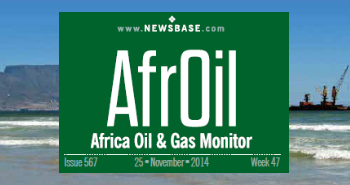
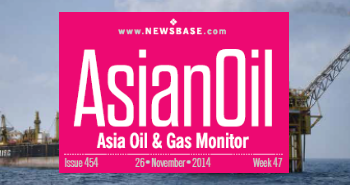
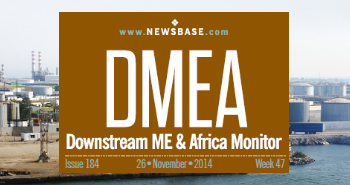
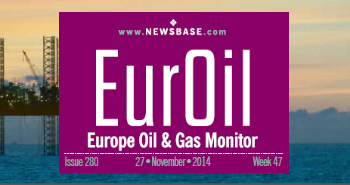
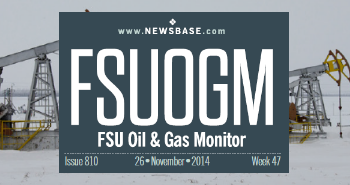
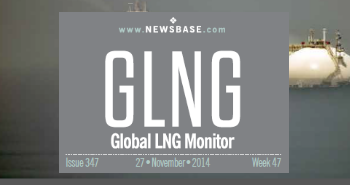
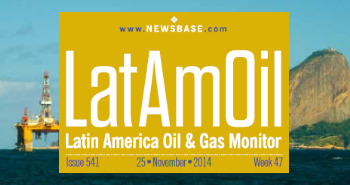
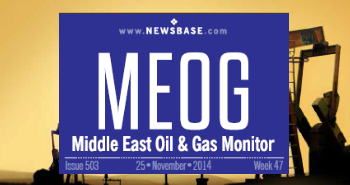
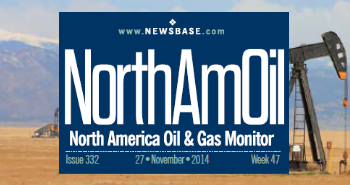
Follow us online